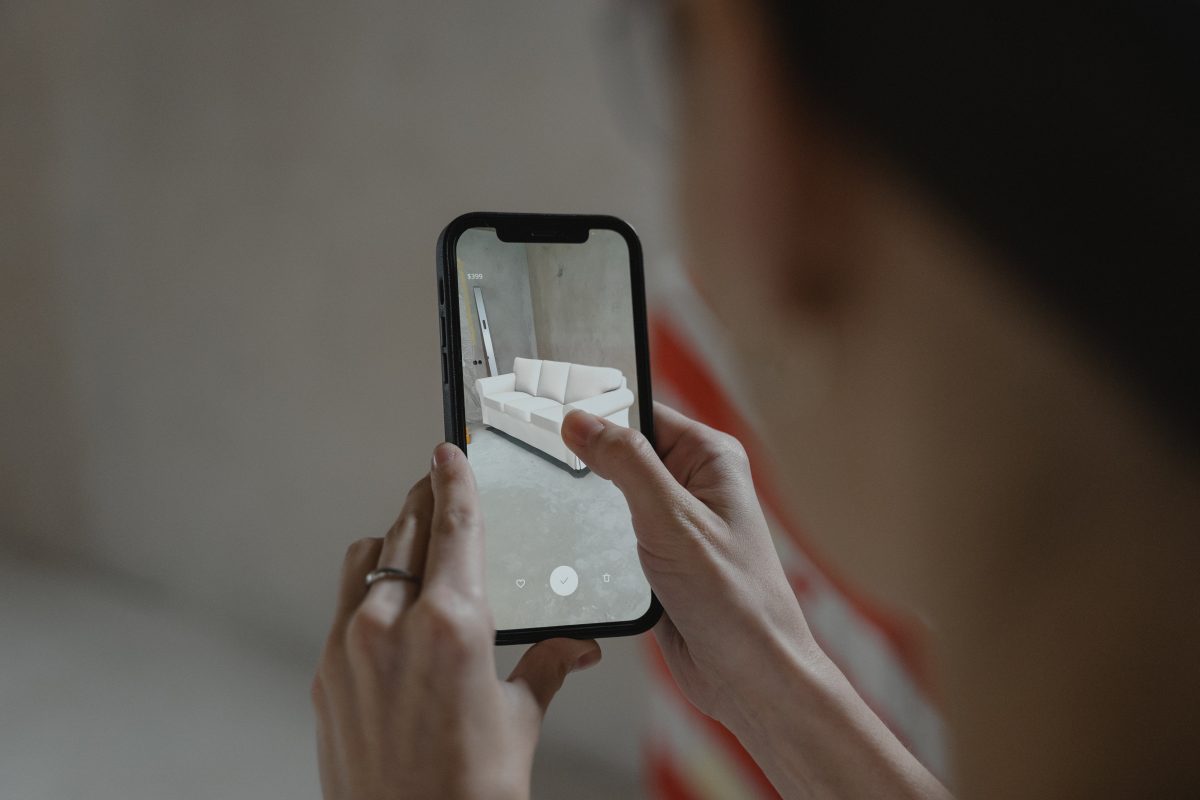Whoever has been faced with buying a desk for their newly (involuntary) home office during the global COVID-19 pandemic might have encountered IKEA’s Augmented Reality solution – the IKEA Place App. It allows “people to virtually place true-to-scale models of IKEA furniture in their own homes” (IKEA, 2019). The application has already been around for four years, but its relevance increased significantly for many customers when stores were forced to close during the pandemic.
As traditional ways of exploring and testing products physically were or still are not possible anymore, Augmented Reality (AR) and Virtual Reality (VR) solutions provide an immersive opportunity of discovering them virtually. Thus, the COVID-19 crisis did not only accelerate the shift from offline to online shopping but also boosted the relevance of AR and VR in the retail industry. In the highly competitive retail landscape, companies should explore this powerful tool enabling them to differentiate themselves and connect with their customers.
The possibilities of applications are vast, for on- as well as offline shopping. Mostly AR and VR solutions are used to create a unique customer experience. With the help of AR, companies can for example facilitate in-store navigation to easily direct customers to the product they are searching for. In addition, virtual try-on solutions are particularly suitable for the fashion and beauty industry and have been put into practice by several firms such as Sephora and Gucci. Next to offering an immersive customer experience, both technologies have the potential to provide substantial revenue impact. According to Shopify, interactions with products having AR content showed a 94% higher conversion rate compared to products without such content. Furthermore, lower return rates can be expected from products that have been previously tried on or tested virtually.
The pandemic has accelerated the adoption of AR and VR by companies as well as customers but will their applications become really an inherent part of our shopping strolls? Or is the increased use of AR and VR for retail business rather temporary? Feel free to comment on your experience with AR and VR while shopping and whether you believe it will become an essential part of retailers’ strategy.
References:
https://hbr.org/2020/10/how-ar-is-redefining-retail-in-the-pandemic?registration=success
https://www.warc.com/newsandopinion/opinion/how-augmented-reality-is-set-to-transform-retail/3967


Hi Lea,
Thank you for writing this interesting and very accurate blog post. I definitely agree that AR and VR will become increasingly important in shopping experiences, both online and offline. Funnily, I’ve actually used AR for furniture shopping for my own home a few months ago! In my opinion, AR is more suitable than VR for most shopping experiences as it allows the shopper to place the product in their own context. As the bought products will likely be put/used/consumed in the context of the shopper’s own home for example, this increases the likelihood to buy and decreases the likelihood of a bad buy. Also, AR does not require a VR headset or any other gadgets and is thus easier to use. Nevertheless, there is definitely potential in VR shopping experiences, I just think it will take longer for consumers to adapt to VR than AR. I therefore feel like AR will sooner become an essential part of retailers’ strategy.
Thank you for you article Lea, great insight into the next stage of ecommerce! Interestingly enough I wrote a report on digital strategy of Farfetch a few years ago, and what is curious to me is their idea of continuous online-offline-online 360 loop integration. What their strategy was referring to is the launch of highly technically sophisticated shops which were linked to the ecommerce platform in real time, further improving the customer experience with AR and holographic displays. But coming back to vCommerce, a few companies in China are already testing a completely virtual versions of their shops, where people can virtually “walk” around the shop and essentially substitute the real in person experience. And while of course it makes sense for such a technology to be developed during Covid times, do you think it would still be viable after the corona is over and all shops are reopened?